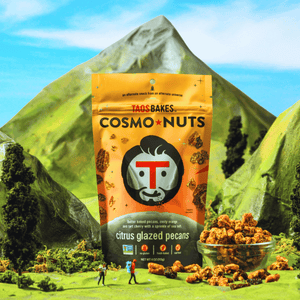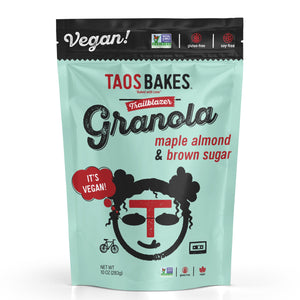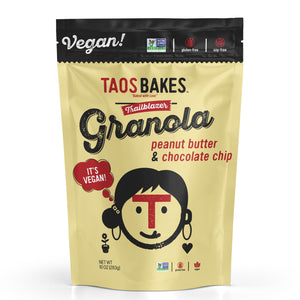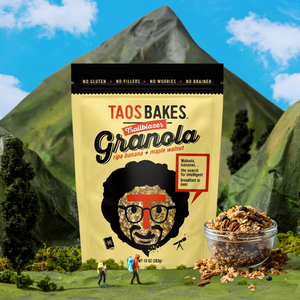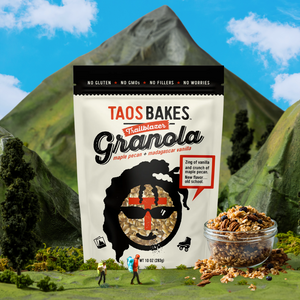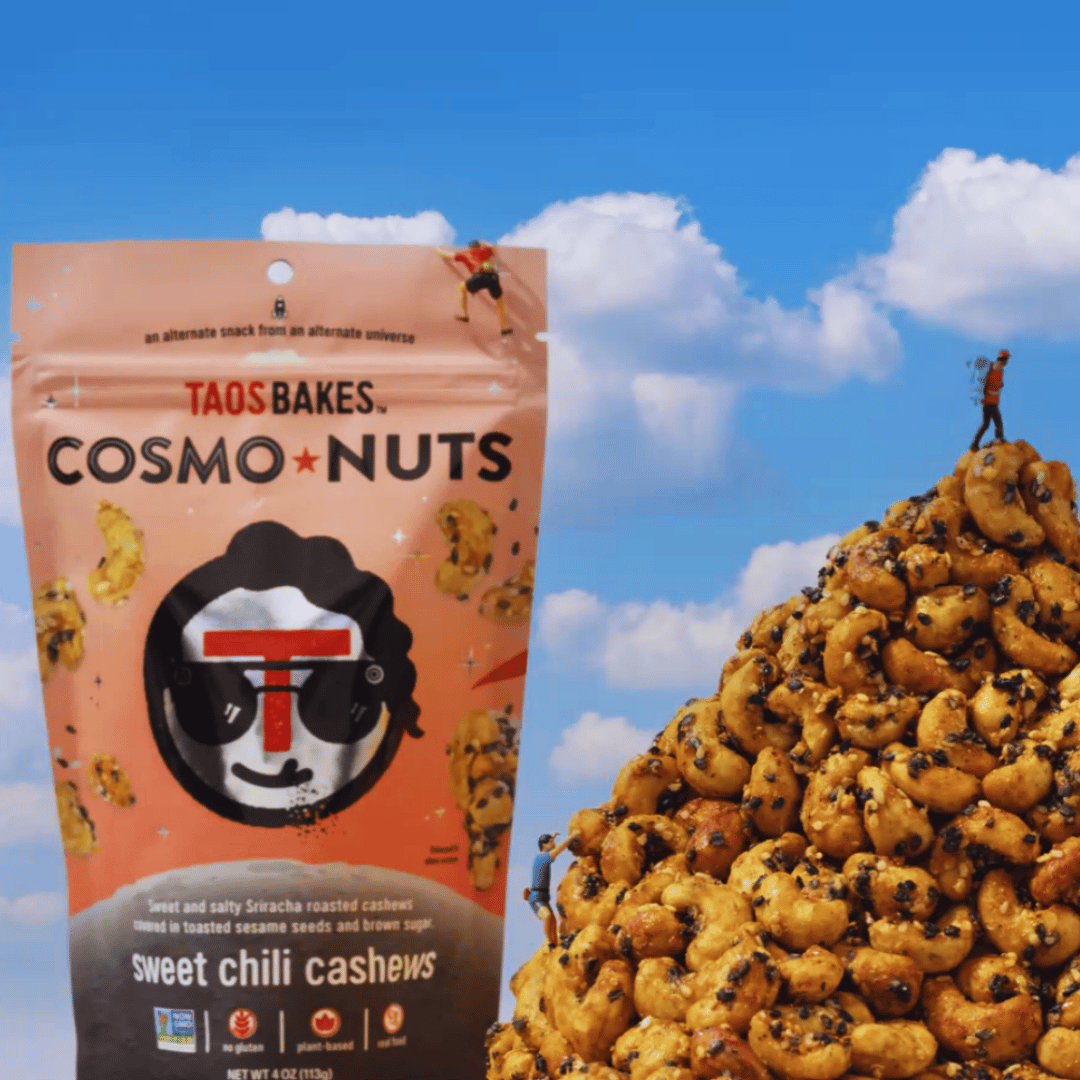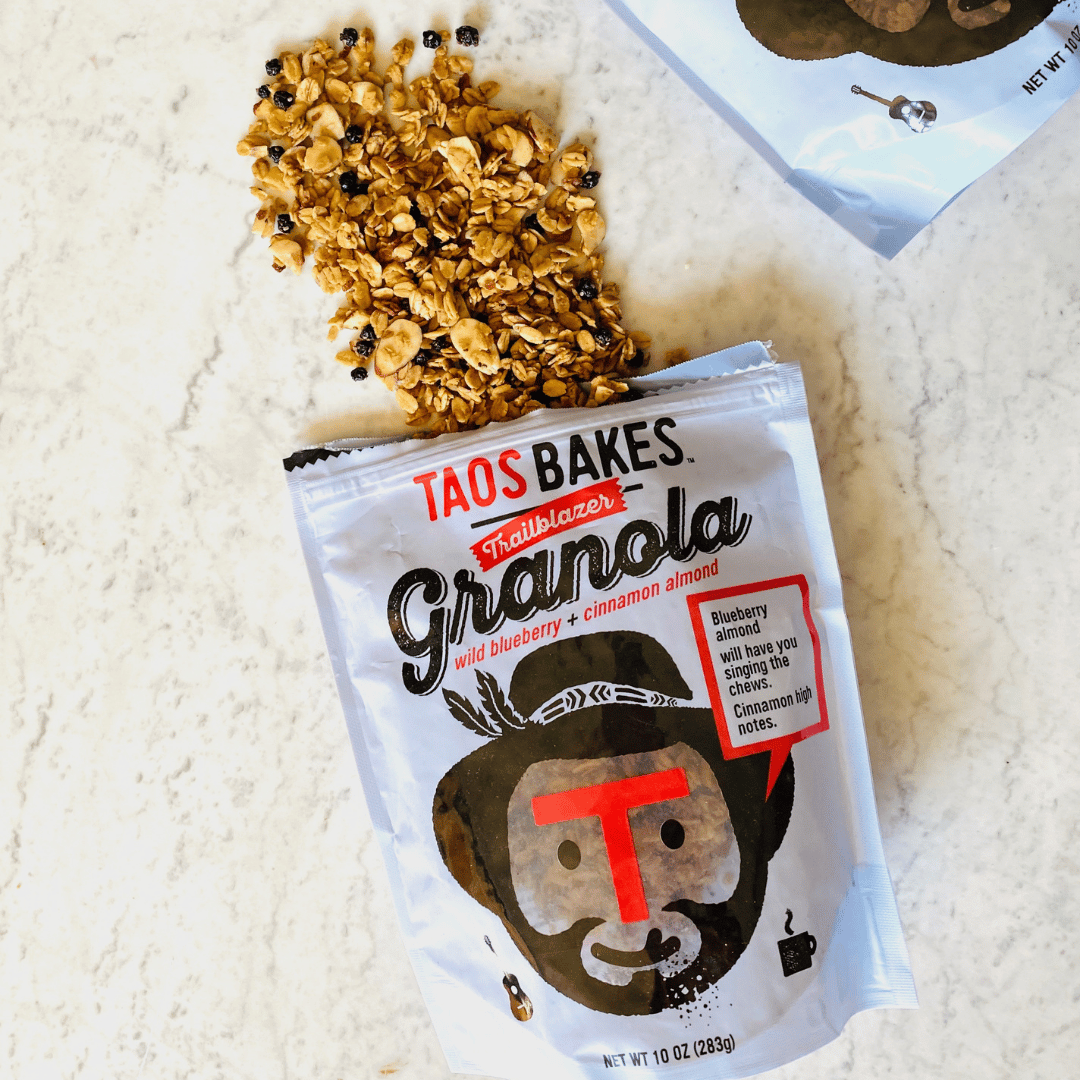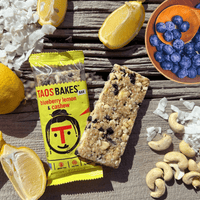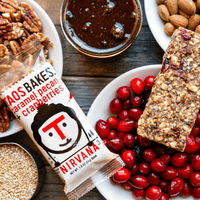Flavor Steeped In Local Tradition
If you’ve ever been to northern New Mexico you’ve likely seen folks on the side of the road with big “Piñon” signs. They’ll park their car, set up a little folding table, and sell roasted and salted versions of this nut that grows locally on Piñon Juniper trees.
The nuts have long been a food source for Native Americans, and were eaten frequently by Spanish colonialists when they first arrived in the Southwest. Each tree only produces nuts every four to seven years, so they’re difficult to gather, but it’s still a strong local tradition. Most people in New Mexico gather a season’s worth, salt and roast them in the shell, then eat them like sunflowers seeds as a snack.
This local tradition is what gave co-founders Kyle and Brooks the idea to include piñon in a bar. Taos Bakes features local flavors as often as possible, and both loved the buttery taste of the nuts. To build out the bar they also included almonds for an energy source, then dug in to figure out what flavor profile would complement the piñon.
For Taos Bakes, they wanted the coffee to be present, but not the only flavor.
Through trial and error they eventually landed on coffee. They’d eaten other coffee snacks but always felt like the coffee was too overwhelming. For Taos Bakes, they wanted the coffee to be present, but not the only flavor. They started by brewing coffee to turn it into a syrup. That didn’t work because the syrup never tasted right. They could have gone with artificial coffee flavor, but years ago, we decided that artificial ingredients will never make into Taos Bakes.
What the duo eventually landed on was a medium-roasted bean, ground super-fine (turkish style). That grind was then mixed with the rest of the dry ingredients to create the exact balance of present-but-not-overwhelming coffee flavor that they wanted.
“We were lucky to find a great coffee that’s right up the middle in terms of taste and is also roasted locally in Angel Fire, New Mexico,” Brooks says.
The final piece of the bar came when they added chocolate and vanilla. Chocolate and coffee are a well-known and much-loved pairing, but Brooks and Kyle didn’t want to make them into a traditional mocha. They were worried the mocha would ruin the rich but subtle flavor of the piñon. To balance things out, they added ground vanilla bean that was eye-wateringly expensive—over $300 a pound—but cut the chocolate with sharp enough confidence to let every flavor come through on its own.

“We knew we wanted to avoid vanilla extract because it didn’t have the same taste, and we were willing to pay whatever it took to get high-quality ground vanilla,” Brooks says.
Today, Piñon Coffee is a favorite for folks who need breakfast on the go because of the coffee kick and 9 grams of protein. Athletes enjoy them for the quick but sustained boost they provide (we’ve heard from cyclists to ultramarathoners who say the bars were key on big pushes). But we also hear from folks who just need a little something to get them through a too-long meeting on Thursday afternoon.
The Healthier Scotcharoo >
